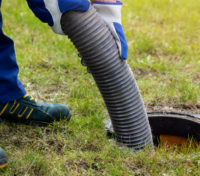We are experts in…
water damage mitigations!
Our Services
Fire Damage Restoration
Dealing with any type of property damage can be stressful, expensive, and draining....
Read moreEmergency Storm Response
When a big natural disaster such as a tornado, hurricane, flood...
Read moreSewage Backup Cleanup
Sewer water is not only unpleasant to smell and look at, but it can also be very dangerous as well...
Read moreOdor Control
Most Odors are dissolved by humidity or water and become airborne through the process...
Read more
Water Damage Restoration
Let us help you restore your property after water has damaged it…
Our mission for Drying Tech is to build relationships with customers. We want to ease the mind during a stressful time. We care about your property the way we care about our own. We strive to be friendly, respectful, helpful, and to provide a safe environment while remediating your property.
If you have any emergency water damage need, simply call our 24 hour emergency service
General Questions
Sensitive people who have touched or inhaled mold or mold spores may have allergic reactions such as a runny nose, sneezing, nasal congestion, watery eyes, skin rash and itching (dermatitis). Molds can trigger asthma attacks in people who are allergic to molds, causing wheezing, chest tightness and shortness of breath.
The time to completely dry a structure depends on many variables such as temperature, humidity, how quickly emergency services begin, amount of saturation and the types of materials affected. Through consistent monitoring and evaluation of the drying process, we can determine when drying is complete. While there are no rules to determine how long your property will take to dry, we can tell you that on average a typical water loss will dry out in three days but can be longer.
Ash is highly acidic and prone to dispersing through the air when it is disturbed, which can be as easy as breathing on it. When swept up into the air, the building’s climate control system will pick it up and blanket entire rooms, making it much more difficult to get rid of. Because it is acidic, it will eat away at a number of materials if it sits for long, especially glass, metal and drywall.
Within a couple days, ash can permanently etch glass, including windows, weakening them considerably and forcing replacement. During this time, any drywall covered in ash can permanently discolor, turning to a sickly yellow and becoming a major eyesore. After a couple weeks, ash will corrode metals, which can result in water leaks or other expensive problems.
And ash is not just a risk to the building. It can also irritate lungs, throats and eyes, resulting in breathing difficulty, coughing, sneezing and general discomfort. This is particularly troublesome for children with asthma, as the ash can trigger an attack.
According to the IICRC S500 Standard 3rd Edition, there are over 120 different viruses that can be excreted in human feces and urine and find their way into sewage. These can include Rotavirus, causing severe and sometimes life-threatening diarrhea in children, Adenoviruses, causing respiratory and eye infections, and Norovirus, a significant cause of gastric flu or stomach flu. There are highly infectious parasitic agents like Giardia and Cryptosporidium that can cause chronic and severe intestinal diseases in both children and adults. Bacterial pathogens in sewage can include Salmonella, Shigella and Escherichia coli. These gram-negative organisms contain endotoxins that are released at the time of cell death and destruction. Endotoxins can cause respiratory inflammation, airway restriction, create the potential allergic and infectious disease responses and when inhaled they may adversely influence the central nervous system.
Latest Tips
What to Pack and What to Purge for a Seamless Transition
5 Long-Term Benefits of Effective Sewage Backup Cleanup
















